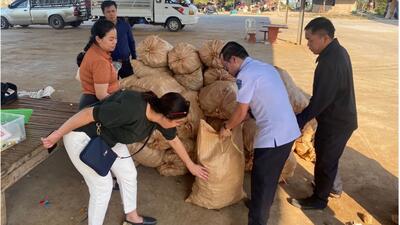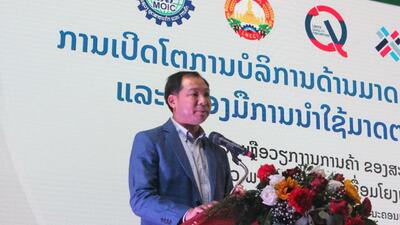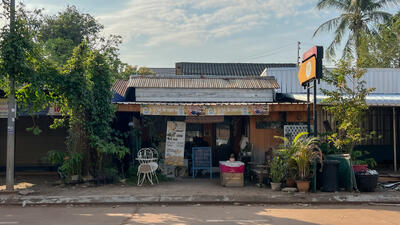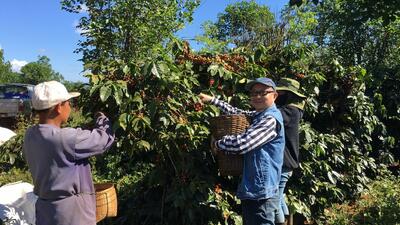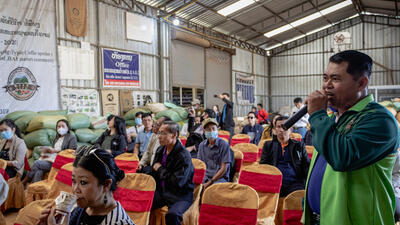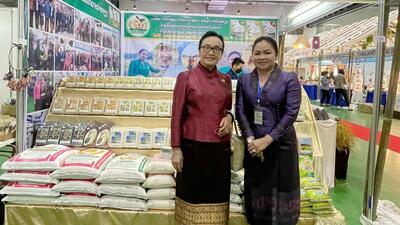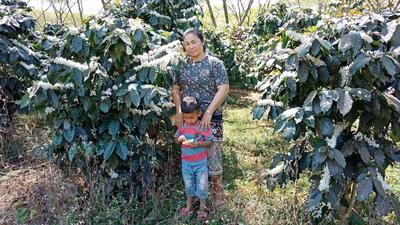Laos from Land-Locked to ‘Land-Linked’ - A Case Study in the Benefits of South–South Trade for Least Developed Countries
Through a rethink of its trade policy, Laos has demonstrated how developing countries, in particular least developed countries (LDCs), must reposition themselves to take advantage of emerging markets. As a landlocked country Laos’ international trade potential has been handicapped by its lack of integration with regional and world trading systems.
But with a new focus on trading with other countries in the sub-region, it now stands to prosper by being transformed into a ‘land-linked’ country. Laos had adopted a market-oriented economy and experienced satisfactorily high rates of growth prior to the global economic crisis. The country was able to attract foreign investment and increase exports to both regional and distant markets. But where other countries had a tendency to concentrate on developed countries as trading partners and overlook regional and emerging markets, Laos realized it was well placed to take advantage of its geographical proximity to emerging markets.
To boost and sustain high growth, however, it is imperative for Laos to integrate the regional and world trading systems. It is currently a member of the Association of Southeast Asian Nations (ASEAN) and the ASEAN Free Trade Area, and is in the process of acceding to the World Trade Organization. Emphasizing the need to develop the private sector to spur investment and increase exports, Laos is implementing a ‘land-linked country’ regional integration strategy to create a market and production base that is favourable to member countries.
Within the context of the Millennium Development Goals and the Laotian strategic imperative to graduate from least developed country status by 2020, the strategy has already benefited the country’s economy with growth in exports, foreign direct investment, official development assistance, private sector development and tourism. The concepts of regional and global supply and value chains have also been introduced, but despite all efforts, the reality of business is always challenging. The impact of the global financial crisis, trade barriers and increased competition are among the difficulties faced by local entrepreneurs. The weakening of the US dollar and the relative strengthening of the local currency have also meant financial risk for exporters, especially small and medium-sized enterprizes (SMEs).
In the light of this situation, trade support institutions and development communities need to support SMEs to integrate the regional and world value chains. As the business network and the supply chain are yet to be established, we have facilitated and promoted investment from neighbouring countries. The policy of value creation and retention has also been put forward since there is a need to transfer from a quantitative to a qualitative level of export development. Laos can no longer rely on exploiting and exporting its natural resources, but needs to industrialize based on these resources.
From a macro-management perspective, this policy is easier said than done. Foreign investors are seeking to expand their business especially in terms of vertical integration. Subsequently, raw materials, particularly mineral ore and timber, from Laos are exported to supply processing industries in neighbouring countries. In the case of timber, the nature of the problem is complicated because countries such as China, Thailand and Viet Nam are large importers of timber to supply their advanced wood-processing industries. Local efforts to ban the export of timber in Laos is a controversial issue fuelled by the conflicting arguments over whether it is better to adopt bans in order to force the development of a local wood-processing industry or take advantage of the revenue gained from exports, particularly in the initial phase of the country’s capital accumulation. The continued export of timber with little value creation has disadvantaged the local wood-processing industry, which suffers from inadequate inputs of raw material and a sawmill capacity exceeding timber supply. The wood-processing industry is also troubled by the lack of funding sources, skilled labour and markets for processed wood products.
The opportunities to assist SMEs in moving up the value chain require trade support institutions, development communities and businesses to think and act differently. Essentially it is about how best to make use of local natural resources. Laos has adopted a holistic approach by creating a more favourable investment climate in terms of infrastructure, legal frameworks and economic and financial incentives. Trade support and promotion organizations need more focused and specialized programmes to assist SME exporters. Diversification of products and markets is a means to reduce risk. Developing regional markets, especially through South–South trade, offers the potential to exploit geographical proximity and less demanding product standards and trade barriers. The Asian region has proved resilient and fast-emerging in terms of economic growth in spite of the recent world economic slowdown. As a small economy surrounded by a vast and growing market, Laos is at an advantage, but access to trade finance and marketing information are areas that need to be addressed.






